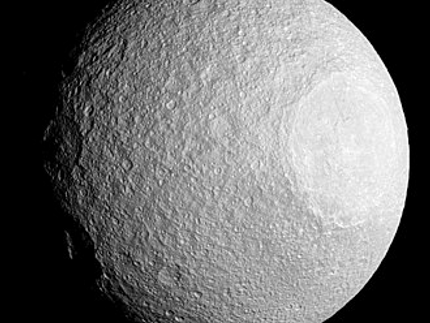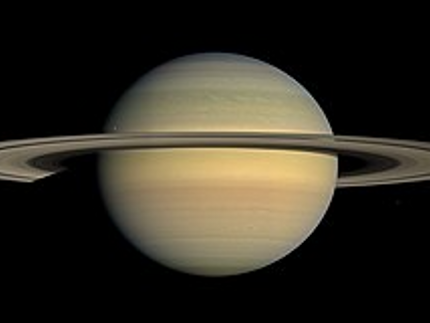Tethys as imaged by Cassini on 11 April 2015
Tethys' (Saturn’s satellite) Mean Surface Temperature Calculation
Tethys' (Saturn’s satellite) Surface Mean Temperature Equation Te.tethys is:
Tmean.tethys = [ Φ (1-a) So (1/R²) (β*N*cp)¹∕ ⁴ /4σ ]¹∕ ⁴
Tethys’ orbital period is 1,887 802 days
Tethys’ sidereal rotation period is synchronous 1,887 802 days
N = 1/1,887 802 rotations/per day
R = 9,5826 AU, 1/R² = 1/9,5826² = 0,01089 times lesser is the solar irradiation on Saturn than that on Earth. The same is on Saturn’s satellite Tethys
So = 1.362 W/m² is Solar constant
Tethys’ albedo, atethys = 0,80 ± 0,15 (bond)
Let’s assume atethys = 0,70
Tethys is a heavy cratered planet, Tethy’s surface irradiation accepting factor Φtethys = 1
Cp.tethys = 1 cal/gr oC , Tethys’ surface is ice crust
The density of Tethys is 0.98 g/cm³, indicating that it is composed almost entirely of water-ice.
β = 150 days*gr*oC/rotation*cal – it is the Rotating Planet Surface Solar Irradiation INTERACTING-Emitting Universal Law constant
σ = 5,67*10⁻⁸ W/m²K⁴, a Stefan-Boltzmann constant
So we have:
Tethys’ mean surface temperature equation Tmean.tethys is:
Tmean.tethys = {1*(1-0,70)1.362*0,01089(W/m²) [150*(1/1,887802)*1]¹∕ ⁴ /4*5,67*10⁻⁸(W/m²K⁴) }¹∕ ⁴ = 87,48 K
Tmean.tethys = 87,48 K is the calculated.
And below is the measured by satellites
Tsat.tethys = 86 ± 1 K
Saturn: Pictured in natural color approaching equinox, photographed by Cassini in July 2008; the dot in the bottom left corner is Titan.
.
https://www.cristos-vournas.com
The faster a planet rotates (n2>n1) the higher is the planet’s average (mean) temperature T↑mean:
Tmin↑→ T↑mean ← T↓max
.

